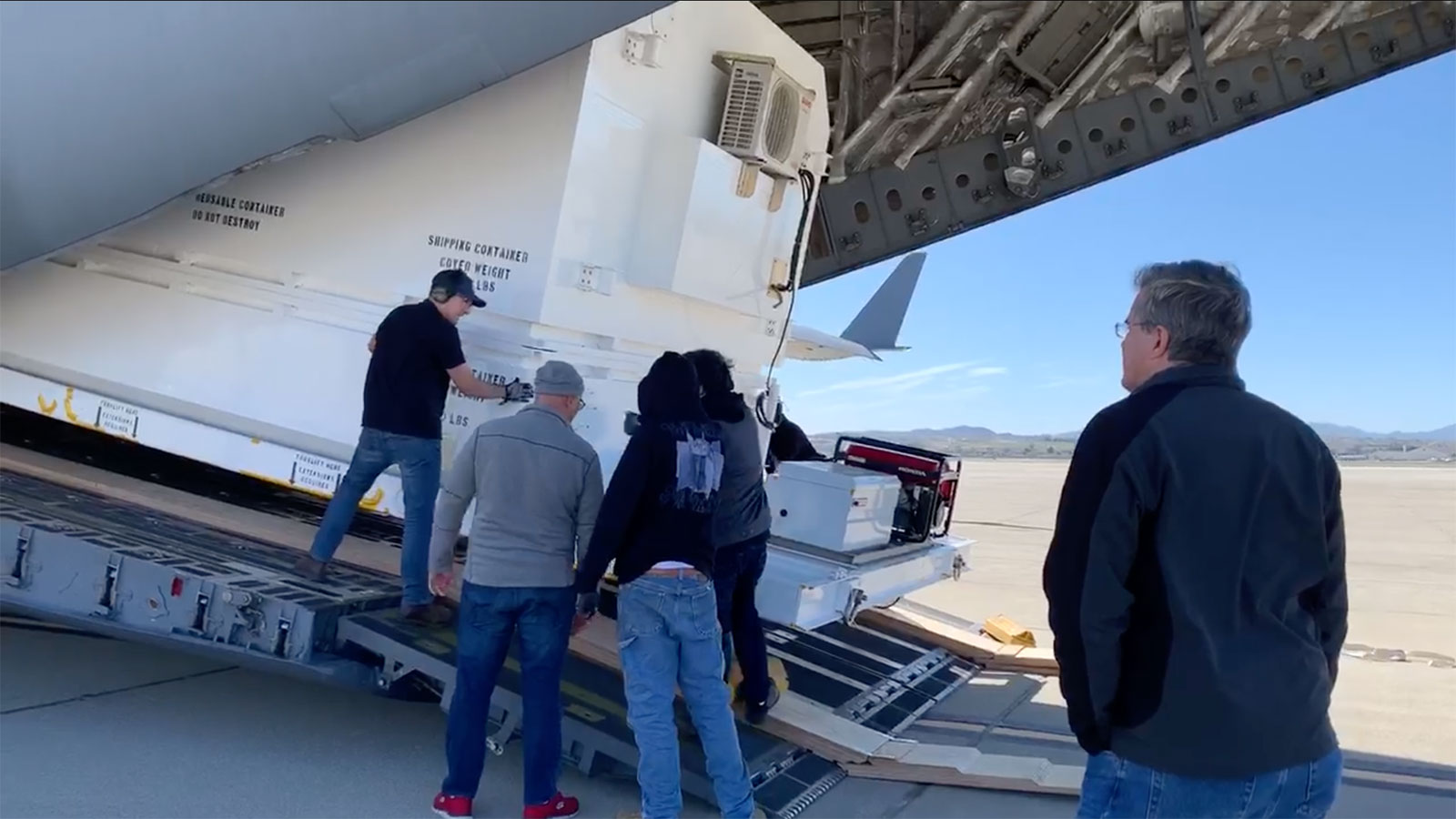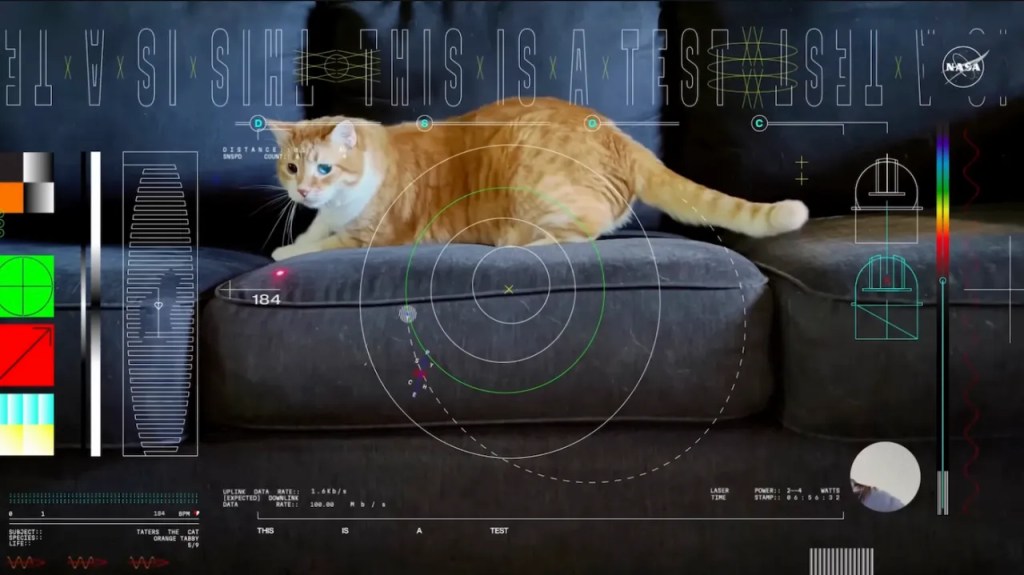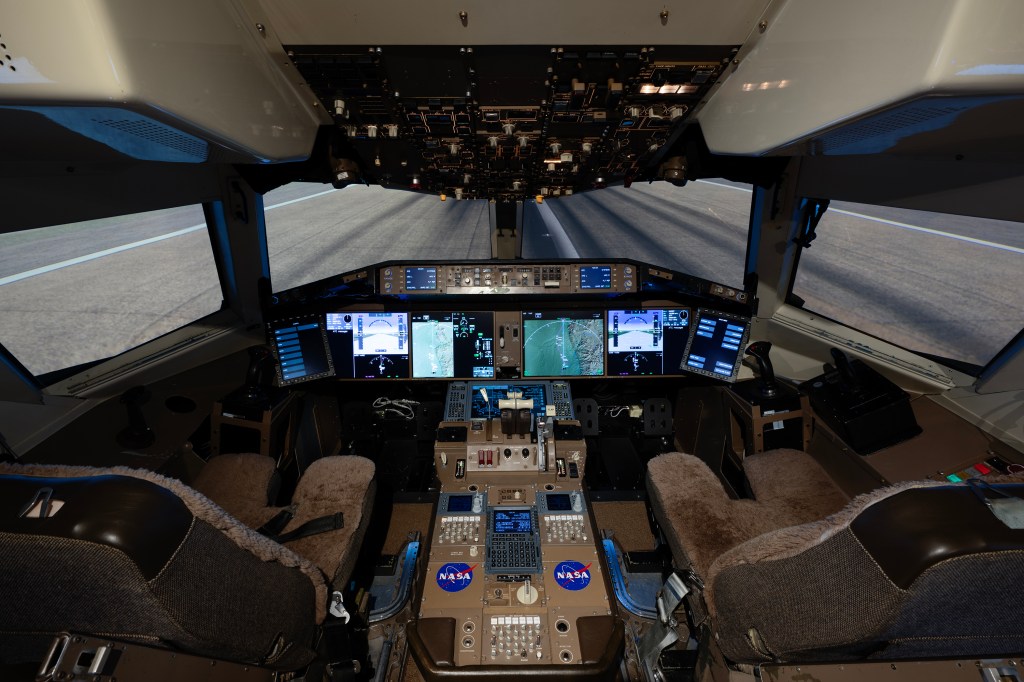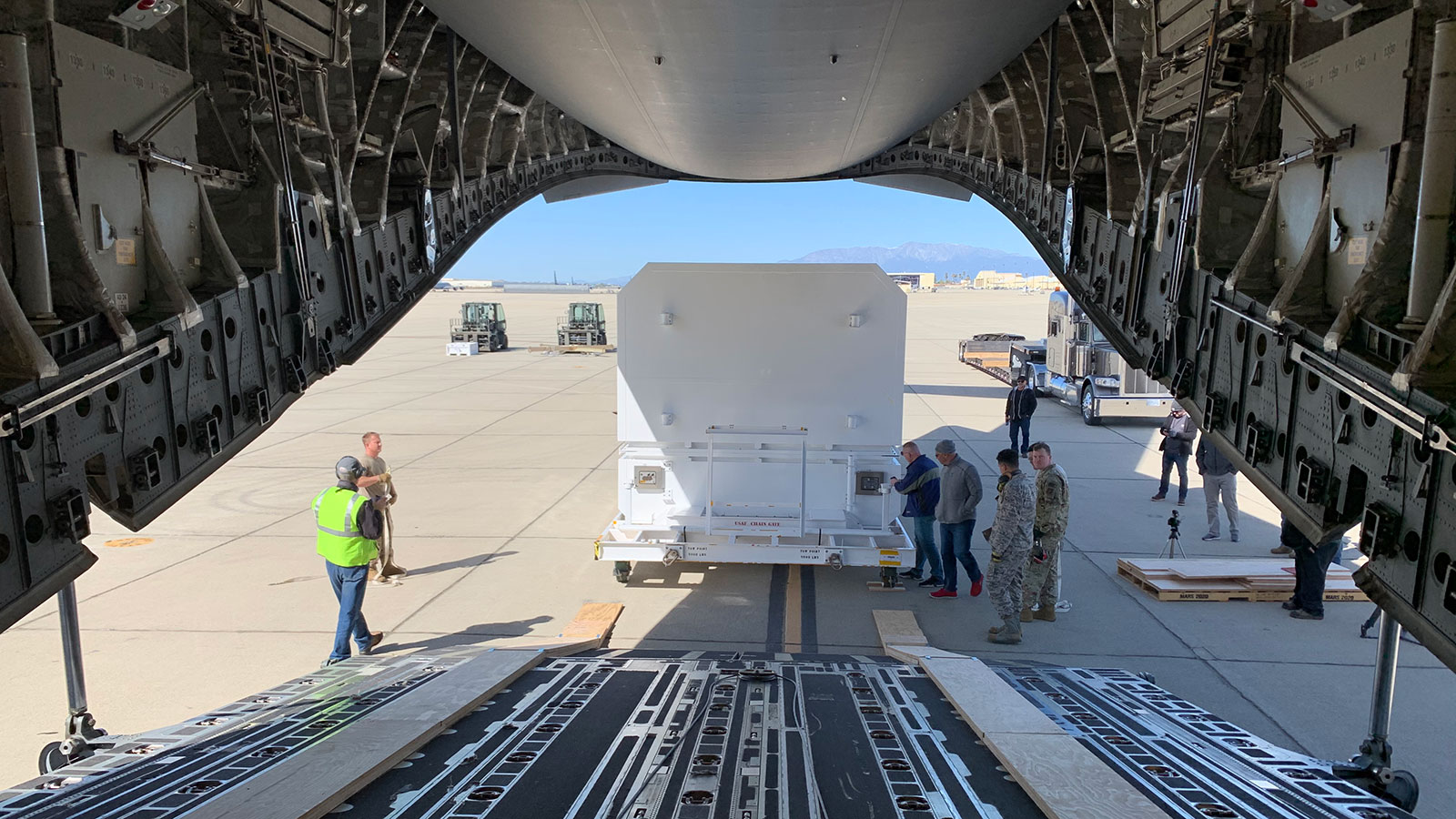
Editor’s note: The Mars 2020 rover‘s descent stage and the Mars Helicopter will be arriving in Florida later this week; the story, which originally stated both arrived with the Mars 2020 rover on Feb. 12, has been corrected.
NASA’s next Mars rover has arrived in Florida to begin final preparations for its launch to the Red Planet this July. An Air Force C-17 Globemaster cargo plane carrying the Mars 2020 rover and descent stage touched down at NASA’s Kennedy Space Center at about 3 p.m. EST (12 p.m. PST) today, completing a 2,300-mile (3,700-kilometer) trip that began yesterday at NASA’s Jet Propulsion Laboratory in Pasadena, California. The mission’s cruise stage and Mars Helicopter will make the trip to Kennedy later this week.
“Our rover has left the only home it has ever known,” said John McNamee, Mars 2020 project manager. “The 2020 family here at JPL is a little sad to see it go, but we’re even more proud knowing that the next time our rover takes to the skies, it will be headed to Mars.”
Assembly, test and launch operations for Mars 2020 began in January 2018. The first piece of hardware that would become part of the rover arrived on the clean room floor of JPL’s Spacecraft Assembly Facility‘s High Bay 1 a few months later.
The rover’s aeroshell — its protective covering for the trip to the Red Planet — arrived at Kennedy this past December. Early on Feb. 11, the rover, cruise stage, descent stage and mission support equipment headed in four police-escorted trucks to the U.S. Air Force’s March Air Reserve Base, where they were loaded aboard the two waiting C-17s.
Within hours of arriving at the Kennedy Space Center’s Launch and Landing Facility, the Mars 2020 spacecraft components will be transported to the same spacecraft processing facility that in 2011 handled NASA’s Curiosity rover, which is currently exploring Mars’ Gale Crater. In the coming days, the Mars 2020 assembly, test and launch operations team will begin testing the components to assess their health following the cross-country flight.
After months of final assembly and additional testing, Mars 2020 should be enclosed in its aeroshell for the final time in late June. It will be delivered to Cape Canaveral Air Force Station’s Launch Complex 41 to be integrated with the United Launch Alliance Atlas V rocket that will hurl it toward Jezero Crater in early July.
Mars 2020 will collect and store rock and soil samples in sealed tubes and will search for signs of past microbial life, characterize the planet’s climate and geology, and pave the way for human exploration. Subsequent missions, currently in the planning stages, will return to Jezero Crater, gather the samples collected by Mars 2020 and return them to Earth for the sort of in-depth study that only a full-size lab can provide.
JPL is building and will manage operations of the Mars 2020 rover for NASA. NASA’s Launch Services Program, based at the agency’s Kennedy Space Center in Florida, is responsible for launch management.
For information on NASA’s Mars 2020 mission, visit:
https://mars.nasa.gov/mars2020/
DC Agle
Jet Propulsion Laboratory, Pasadena, Calif.
818-393-9011
david.c.agle@jpl.nasa.gov
Grey Hautaluoma / Joshua Handal
Headquarters, Washington
202-358-0668 / 202-358-2307
grey.hautaluoma-1@nasa.gov / joshua.a.handal@nasa.gov
2020-028

















/quantum_physics_bose_einstein_condensate.jpg?w=1024)











